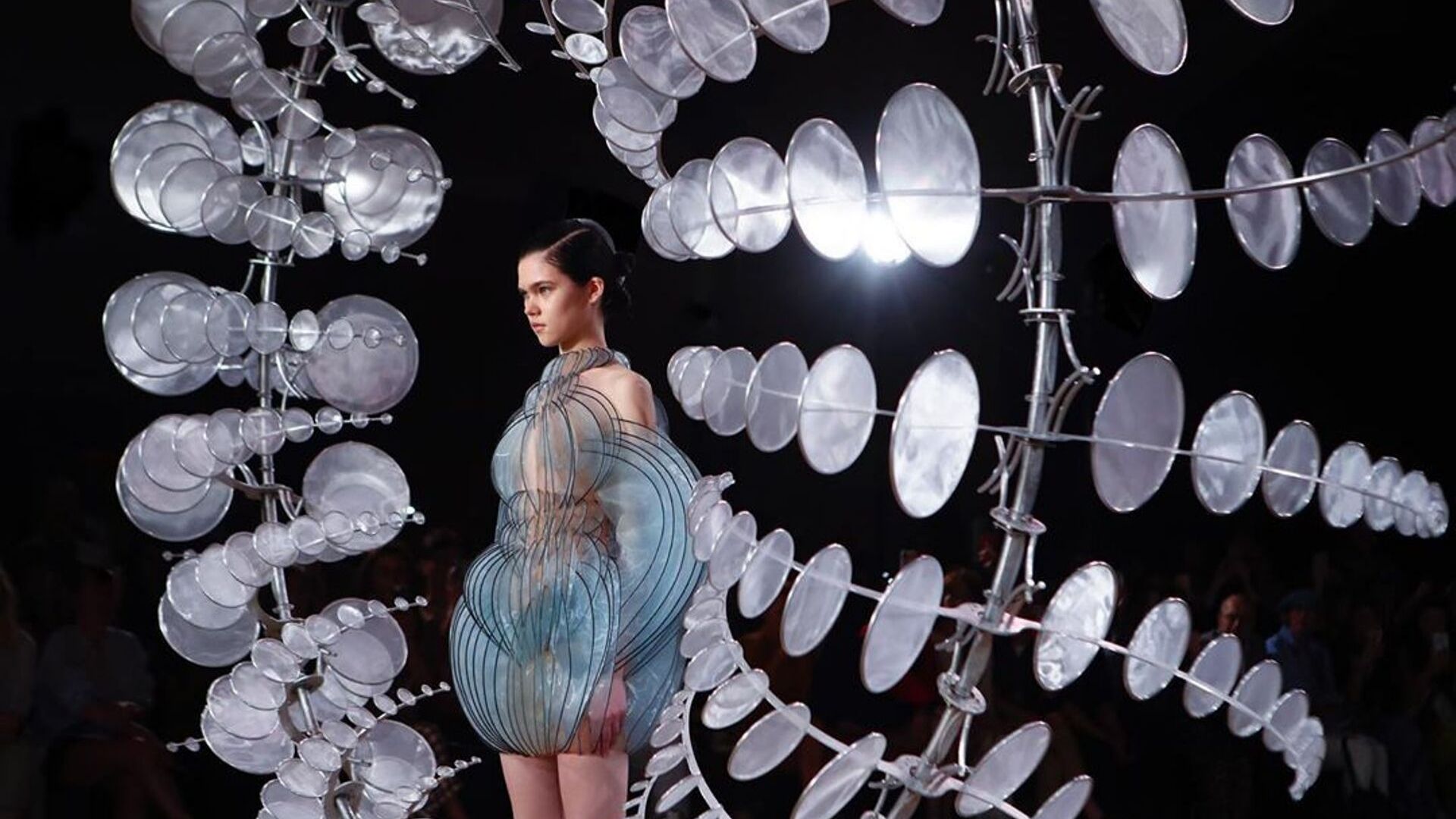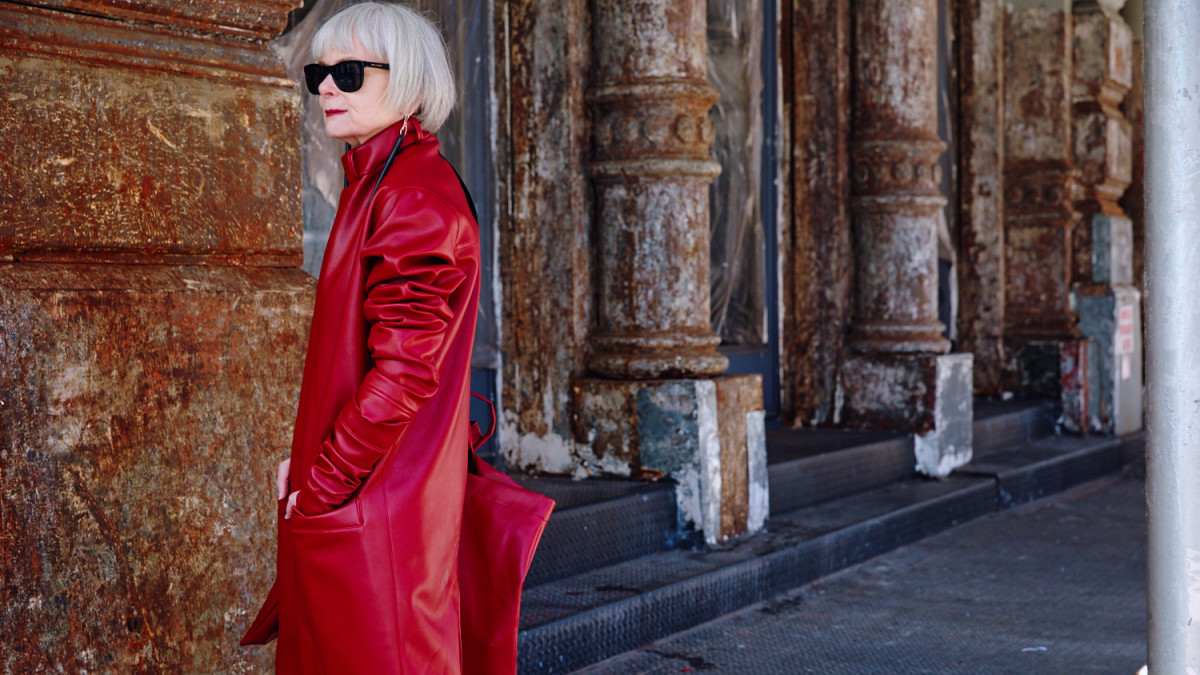Fashion Staring into the Future: How the Space Age was Dressed?
The first satellite launch, the first man on the moon – these events blew up the old world. Space instantly became the main subject in all fields, even fashion, which was far from science. In this article, you’ll learn why fashion began to focus on astronaut costumes and how the unusual Barbarella outfit was created – the sexiest sci-fi movie protagonist.
Photos taken by NASA in 1965 show astronaut Ed White, the first American in outer space, strapped with a gold rope to the Gemini 4 and dressed head-to-toe in white, floating above the undulating blue line of Earth’s horizon, with the Pacific Ocean reflected in his gilded helmet.
He appears to be a creature of a higher order than the average person in his spacesuit. He is free from the gravity that keeps people on the surface of the Earth, and he can view all of humanity from orbit.
Such photographs astonished the imagination of many people, and designers at this time were developing a space-age aesthetic, expressing it in flowing lines and space motifs. For example, the Sputnik table (1965) and the Flying Saucer floor lamp (1970), designed by Yonel Lebovici, featured shimmering acrylic disks suggestive of space; googie-themed buildings similar to flying saucers were constructed, including Edward Carlson’s Space Needle in Seattle (1961) and the Los Angeles International Airport Theme Building (1961), designed by Pereira & Luckman.
The fashion industry sought to create a modern look, associating it with youth, sportswear, and the space age. As a result, white was everywhere: in interiors, the design of different objects, and clothing. Engineers working on spacesuits chose white to make the astronaut clearly visible amid the black background of outer space, but for fashion designers like André Courrèges, white was not only a reference to spaceflight but also an opportunity to emphasize the predominance of form over the texture.
Architectural forms in fashion emphasized the “new functionality” with its characteristic elongated and angular silhouettes, which were possible thanks to engineers’ new materials and new modeling technologies.
Jane Pavitt notes the paradoxical nature of this optimistic, forward-looking design, which emerged during a disturbing period of the Cold War. The world was on the brink of catastrophe, while designers and consumers enthusiastically embraced a design that seemed to anticipate the utopian future.
The thematic photos in the space fashion series showed models standing proudly straight, looking up expectantly, and sometimes they seemed to be floating in outer space.
The language of the articles that accompanied such illustrations abounded with terms and metaphors related to spaceflight. Visual and verbal references to the space age were emphasized, as were the connections between space exploration and modernity.
Although the Soviet Union and the United States were leading the space race, the development of space-era fashion was primarily influenced by European designers.
The space-era fashion aesthetic, with its white and metallic suits, helmet-like hats, jumpsuits, minidresses, and flat-soled shoes, was created by Pierre Cardin, André Courrèges, and Paco Raban.
The collections designed in the mid and late 1960s by André Courreges embodied the myth of the future and the conquest of space. Courrèges believed that new materials could revolutionize fashion. Using unique materials used for the clothing of pilots and athletes, he began to make garments from fabrics with acetyl cellulose.
Just at that time, substances that visually enhanced the brightness of the material appeared, so the designer was able to achieve radiant white colors that seemed to glow in the daytime and reminded of the bright side of the moon.
André Courrèges was the first to produce mini dresses with a triangular silhouette and, in doing so, separated the body and the clothes – the clothes began to seem weightless. Realizing that if the waistline is emphasized, it visually divides the silhouette in two, Courrèges sought to unite the upper and lower parts of the figure into a single whole.
His minidresses fell off the shoulders and widened toward the bottom. As a result, he achieved the desired effect: the clothes seemed to float in weightlessness, not touching the body, so a person didn’t feel it on the body.
In 1965 Peter Knapp photographed Courrège’s Moon Girl collection for Elle magazine, and the images made it look like the models were floating on the pages in a state of weightlessness.
Space-age fashion reflected the desire to conform to the images surrounding us. By mimicking the astronaut’s appearance, fashion heavily relied on the illustrations NASA published in print media.
Models dressed in spacesuit-like white outfits gazed upward, similar to the Apollo astronauts. Imitating the astronaut poses from the first lunar landing, they confidently posed with their legs spread widely in tall, padded white or silver boots.
Helmet-like hats partly obscured their faces, all of which could come in different shapes, from the plastic bubble Emilio Pucci invented in 1965 to the helmets from Pierre Cardin’s fall/winter 1966/67 collection.
Such designs allowed ordinary citizens of the space age to experience space aesthetics but at the same time emphasized the distance that separated the professional world of astronauts from the terrestrial lifestyle of the civilian population.
Since space-age fashion was not expected to meet the exact requirements of real spacesuits, it could rely on reality and fiction simultaneously. There was no boundary between clothing based on NASA photographs and models borrowed from science fiction as the general public perceived space exploration through the prism of science fiction.
In 1976, NASA made a pleasant surprise to science fiction fans by removing the case from its first shuttle at the opening ceremony accompanied by music from “Star Trek” and naming the spacecraft “Enterprise” after the fictional starship from the same series.
It was the beginning of what Constance Penley calls “the era of NASA and Star Trek,” an era when it was easy to imagine the path humanity would take from the present day that NASA describes to the tomorrow portrayed in “Star Trek.”
Both NASA and “Star Trek” were closely related in fashion. For instance, the shape of “Star Trek,” the crew of the fictional spaceship, was based on sketches and suggestions from NASA explorers.
Perhaps the most precise illustration that space-age fashion drew inspiration from a mixture of real-life events and science fiction comes with the costumes designed by Jacques Fontere and Paco Raban for the Roger Vadim film “Barbarella” (1967). The outfits Fonterra and Rabanne created for the film’s protagonist, Jane Fonda, who travels through the galaxies, resemble the models from Rabanne’s collections, with their distinctive elements of rigid plastic and metal.
Although Barbarella’s unusual closet made the film famous, it is just one of two space costumes she appears in, reminding us that the future of high space fashion is not spacesuits but other space clothes that can be worn when a spacesuit is not necessary.
Manufacturers caught similarities between the demand for corsets and the demand for high-altitude flight suits. In both cases, it was primarily about the pressure on the body from outside. In aviation, mechanically pressurized suits were used to protect pilots flying at high altitudes from the effects of acceleration and pressure reduction. New trends in corsetry production led to the appearance of corseted underwear with elaborate designs, which often used the same materials for manufacturing.
Not coincidentally, the same companies produced both types of garments – it turned out that companies with expertise in corsetry production were well equipped to make anti-pressure suits for other consumer groups.
Companies such as the Spencer Corset Company, Playtex, and the David Clark Company were involved in producing lingerie slimming for retail sales and altitude-compensating suits for customers in the aviation industry, including NASA.
Nicholas de Monchaux describes the significant role underwear manufacturing played in developing the spacesuits – in particular, that seamstresses were used to working with similar materials and performing tasks close to those for NASA engineers.
NASA made unsuccessful attempts to improve the spacesuit, while the Playtex workers were able to apply complex handwork techniques beyond NASA engineers’ competence. Ultimately, NASA owed its first successes in space suit production to “hand sewing techniques… stitching, slashing, and other varied and skill-intensive methods that have always been used in clothing production.
At the dawn of the first space age, it seemed that the underwear industry, along with aviation, would enable the development of advanced technology for space gear. However, NASA’s private suppliers had not yet set goals large enough to ensure the continued growth of the space industry when government organizations began to lose faith in and interest in the space program.
For premium readers








